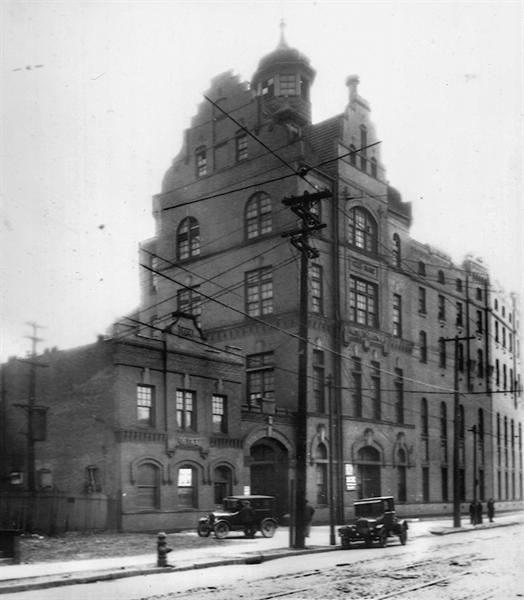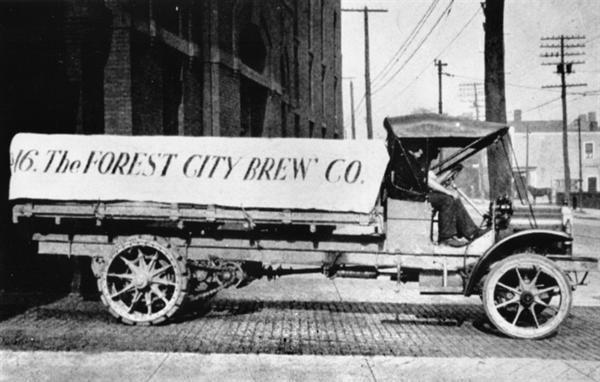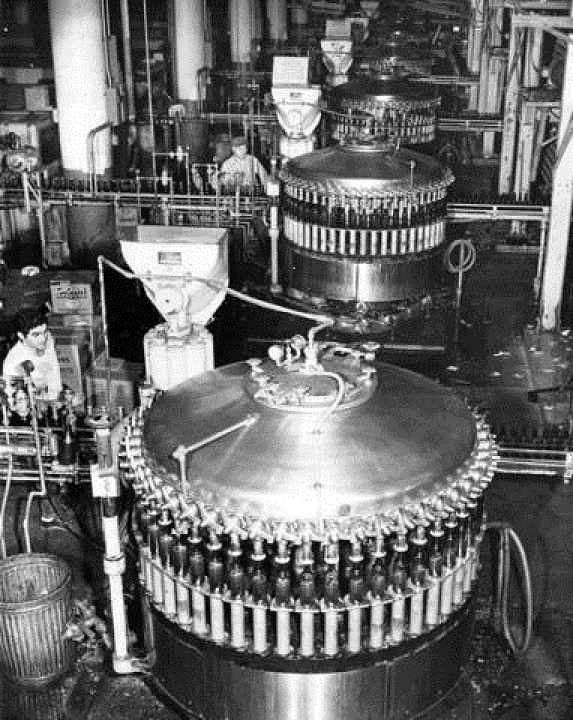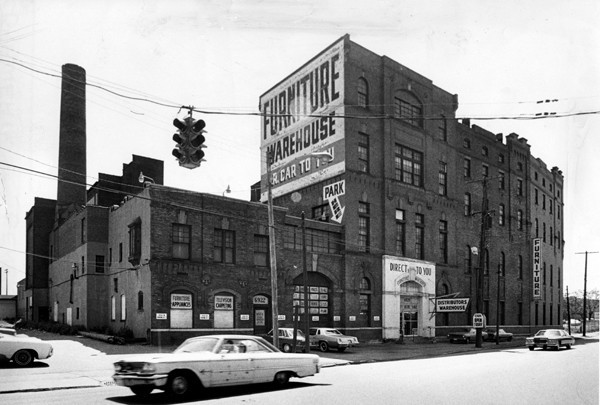Forest City Brewing Company

One could easily mistake the recent proliferation of microbreweries and brew pubs springing up on what often seem to be every other block in Cleveland as a modern and unique phenomenon. All of this has occurred here before, however, and with even more vigor and success than today’s upstarts are enjoying. With the influx of beer-loving immigrants from Germany, Bohemia and Ireland after the Napoleonic Wars ended in 1815, Cleveland was a big, and expanding, beer-drinking town. Just as IPAs fuel the burgeoning beer market today, at the end of the 19th century it was the new German lager that was all the rage, and most of the two dozen breweries then producing upwards of half a billion barrels of beer, switched from ale to lager brewing. Ironically, the shift today is back in the other direction, from the now disdained lager, back to ale. In an attempt to take advantage of the huge profits being raked in by beer barons of the day such as Isaac Leisy and George Gund, in the spring of 1904 a grocer and tailor pooled their resources and built a state of the art brewery on Union Avenue and East 69th Street, and the Forest City Brewing Company was born.
Michael Albl was brought to America by his father in 1850, leaving behind his handicapped mother in Stenovic, a province of Pilsen in what was then Bohemia. Arriving in Cleveland, like many Czech immigrants of the time, Albl quickly found work as a cooper in Rockefeller’s refinery. In the winter of 1873 he opened a grocery at 4950 Broadway that would grow to become one of the largest in the area. By this time Albl was trusted and admired by his community and was often called on to serve as executor of estates and to offer business advice to his neighbors. He dabbled in real estate and the insurance business, and was elected to a string of political offices after garnering the support of the community. He was appointed judge on April 1, 1887, and waterworks trustee in 1890. In 1904 Albl teamed with fellow Czech Joseph Troyen to build a state of the art brewery just a short walk from Albl’s successful grocery and Troyen’s clothing shop. They recruited Vaclev Humel from the Pilsner Brewing Company on Cleveland’s west side to supply the beer brewing expertise they lacked.
The enormous building at 6920 Union Avenue was designed by Mueller & Mildner, a team of architects from Detroit who specialized in breweries throughout the Midwest and Canada at the turn of the 20th century. This was a hulking industrial building built more for function rather than form, but was described as, “the most distinctive and unusual industrial architecture to be found on this continent” by the journal Historic Preservation in 1975. The brewery was among the first to switch to steel fermenting tanks, vats and kegs, and coupled with the steel supports of the brewery itself, made it far less prone to fire than previous breweries. It opened with a brewing capacity of 50,000 barrels/year to serve a mostly local market, and is estimated to have cost $220,000 to construct.
Although the brewery was successful from the start and was featured in many of Cleveland’s saloons in the early 20th century, several difficulties had to be confronted by Albl and his team. A worker named Emil Kohlt was severely burned on July 16, 1909, when scalding wort was accidentally spilled on him. Just two years later Jerry Mrazek was the subject of the most grisly event that occurred at the brewery when his body was found boiled at the bottom of a huge brewing vat. Newspaper accounts vary, with one claiming he fell into the boiling liquid after fainting due to illness, while another maintains that it was suicide. Despite these accidents, the brewery was constantly expanding during these early years, and in 1913 a $25,000, three-story bottling line was planned. With construction nearing completion the night of December 17th of that year, and despite the brewmaster, Marian Hansky, living in a house directly across the street, two men armed with sledgehammers did extensive damage to the new addition and parts of the existing brewery. The men, who were never apprehended, were suspected of belonging to the Prohibition movement, which would be the biggest and most constant threat to Forest City Brewing.
Prohibition began in Ohio in 1919, a year before it became law across the United States. Forest City was one of the very few breweries in Cleveland that attempted to remain open during this period. Michael Albl’s son Frank attempted to keep Forest City afloat by producing Zem-Zem grape juice and XLNT De-Alcoholized beer, but was rumored to have continued supplying local speakeasies with the fully-alcoholized, illegal variety. After numerous lay-offs, Prohibition won and the brewery finally closed its doors in 1930, leaving only Pilsener Brewing Company operating in Cleveland by the end of Prohibition.
With the repeal of Prohibition in 1933, Forest City immediately went back into production. Hansky was still the brewmaster, brewing the famous Samson Ale—named after the brewery near Albl’s hometown in Bohemia that produced the original Budweiser. Forest City, better suited than most Cleveland brewers to resume production, accounted for 25% of the beer sold in the first year after Repeal, but soon struggled financially once the new beer conglomerates got up to speed. The brewery was purchased by the Carling Brewing Co. in 1944 for $477,000, but they would consolidate their production facilities four years later and the brewery on Union was closed and the equipment sold. The building was not well-suited for other businesses, and after a short period as Distributors Furniture Warehouse in the 1970s, the building was demolished in February 2012. Of all the many breweries that once proudly called Cleveland home, the Forest City Brewing Company's building on Union Avenue is the only one that has ever been named to the National Register of Historic Places.
Images












